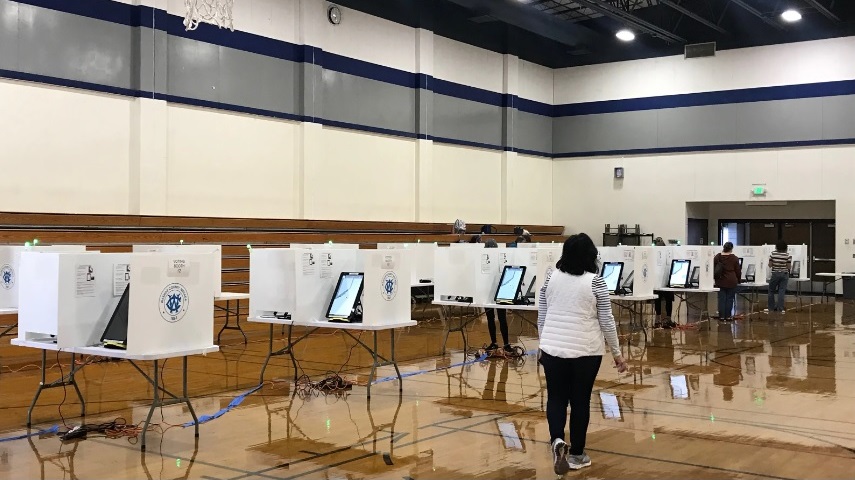
Question 3: Experience of Other States Highlights Perils of RCV
Proponents of ranked-choice voting claim the system guarantees a majority winner, increased participation, decreased negative campaigning and an end to “strategic voting.”
Those who live in states which have already adopted ranked-choice voting, on the ballot in Nevada this fall, say that hasn’t happened.
“I don’t like ranked-choice voting because it disenfranchises voters, makes it harder to vote, makes it more confusing and it leads to a more confusing result in the aftermath,” said Nick Murray, director of policy for Maine Policy Institute, during a webinar on ranked-choice voting, or RCV, hosted by Nevada Policy last month.
Ranked-choice voting is used in Maine and Alaska. In both states, RCV is employed in statewide elections for governor, state legislature and Congress.
Alaska, which held its first ranked-choice vote in August, saw much confusion about how the system worked and concerns about the vote-tabulation process, according to Sarah Montalbano, a research associate with Alaska Policy Forum.
“Alaska is solidly Republican on most issues, but you can see with ranked-choice voting, at least with the funders of this effort, that they were hoping to split the stronger Republican vote by having multiple Republican candidates and making it a little more difficult for them to get elected,” she said.
Nevada’s ballot initiative, called the Nevada Top-Five Ranked Choice Voting Initiative, would require residents voting in the general election to rank the top five candidates in order of preference when casting a ballot, rather than simply choosing the individual they think would do the best job.
If no candidate gets a majority, the candidate with the fewest votes is eliminated and votes cast for that candidate are redistributed to whomever is ranked next on each ballot. This process continues until one candidate has a majority of votes.
RCV requires, ideally, that voters have an informed opinion about every candidate — and every candidate’s policy positions — to rank them responsibly. The current system typically requires voters to research two candidates for each state or national office.
But under Nevada’s ranked-choice voting initiative, as many as five people would be on the ballot for each race, meaning that elections for just the governor and lieutenant governor would theoretically require researching 10 candidates in all.
As such, RCV may depress turnout by discouraging voters who don’t feel knowledgeable enough to make informed decisions about every candidate in every race. Nevadans have lives to lead, and it’s unrealistic to believe that even a majority of voters who must work and possibly care for children or other family members will find time to conduct research on dozens of candidates.
Also, RCV risks decreasing turnout among individuals whose first language is not English, younger voters less familiar with the electoral process or those who simply don’t want to be bothered with a significantly more complicated system.
Consider what happened in Alaska’s special election for its U.S. House of Representatives seat this summer.
Democrat Mary Peltola defeated a field that included Republicans Sarah Palin and Nick Begich III. In the first round, Peltola captured 40 percent of the votes while Palin received 31 percent and Begich took 29 percent.
Those results showed clear support for Republicans, as the two Republican candidates captured 60 percent of the vote between them. But under the new RCV system, Begich was eliminated and his voters’ second choices were redistributed to Peltola and Palin as appropriate.
Palin had more second-place votes than Peltola, but not enough to push her over the majority threshold, as Peltola won, 51.5 percent to 48.5 percent.
“What was important were the 11,000 ballots that went for just Begich and no one else, which is what are termed an exhausted ballot,” Montalbano said. “Those ballots weren’t counted in the final grouping.”
An exhausted ballot occurs in RCV when all a voter’s candidates have lost but two or more other candidates remain in the race. It could be because a voter lists just the one candidate they believe worthy of election or because they don’t like the idea of ranking several candidates and decline to list all candidates.
Once a voter’s ballot is exhausted, it’s no longer included in the tabulation.
“Even though you showed up on election day, casted a legible ballot and casted a proper ballot, but you didn’t mark one of the two final choices, your ballot is removed from the final count,” Murray said.
Adding to the confusion in Alaska was the fact that the special election was held Aug. 16, but the results of the second round weren’t announced until Aug. 31.
“If you make the system more complex, you’re going to increase the information costs and you’re going to increase voter confusion,” Murray added. “We should have a voting system that’s as simple as possible and makes it as easy as possible to participate. Unfortunately, RCV fails in that.”
Montalbano of Alaska Policy Forum said more complicated elections often result in more contentious elections.
“You need to be careful and think about the unintended consequences,” she said. “An interesting voting system is not necessarily the one you want.”
Learn more in the video below: